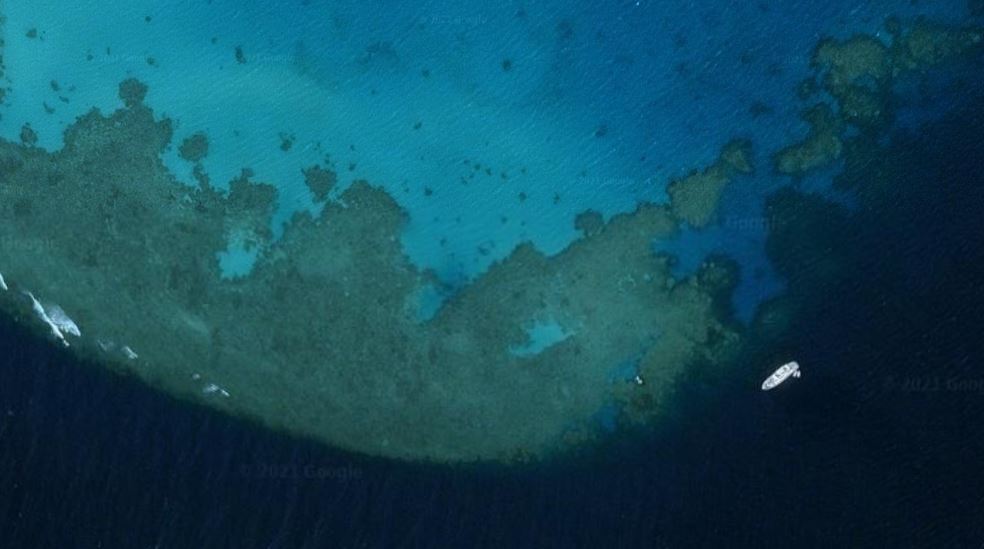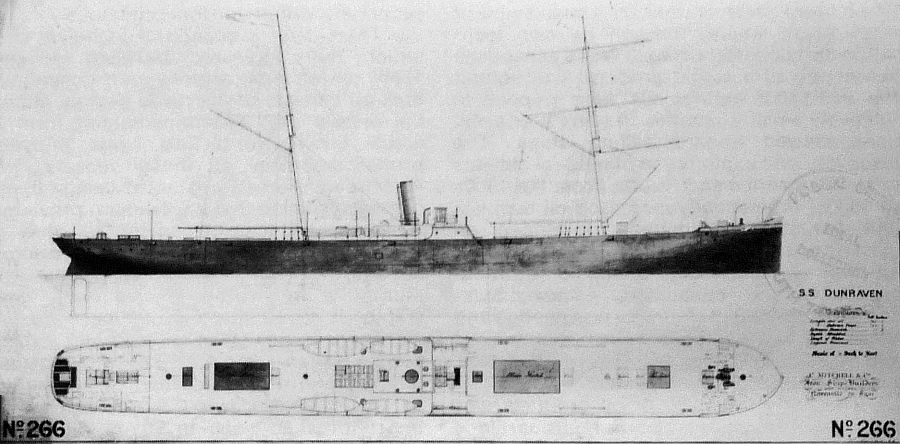
The Sail-Steamship SS Dunraven was built in Newcastle upon Tyne at the Charles Mitchell and Co. Iron Ship Builders yard and was launched in 1872. The ship was commissioned by a Mr W. Milburn on behalf of the Mears Watts Milburn & Company of Newcastle Upon Tyne. Powered by both sail and steam, she was planned for the route from Britain to Bombay
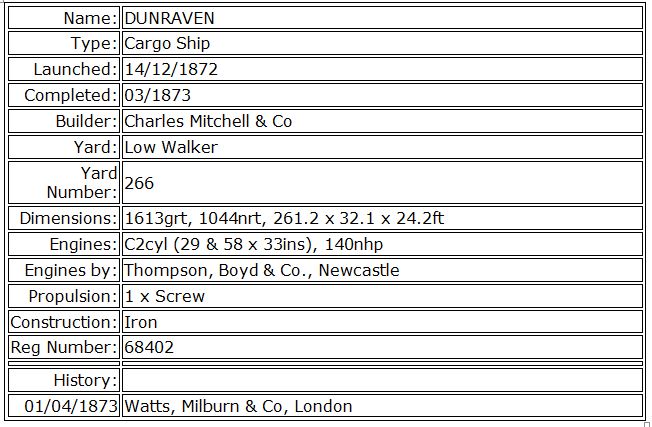
Charles Mitchell & Co:
Charles Mitchell, born 20th May 1820 in Aberdeen, founded the Low Walker shipyard in 1853. Mitchell had served an apprenticeship with iron founders Simpson & Company, of Aberdeen, and following that, moved to Newcastle Upon Tyne in September of 1842. Mitchell found employment with John HS Coutts, a ship-yard owner, also from Aberdeen. Mitchell worked for Coutts until 1844 then moving to work in London, and undertaking extensive travel in Europe, France, Germany and as far as Italy. Mitchell returned to Newcastle in 1852 to set-up the Low Walker yard next to the Coutts yard, although it is not known what John Coutts thought of that at the time……
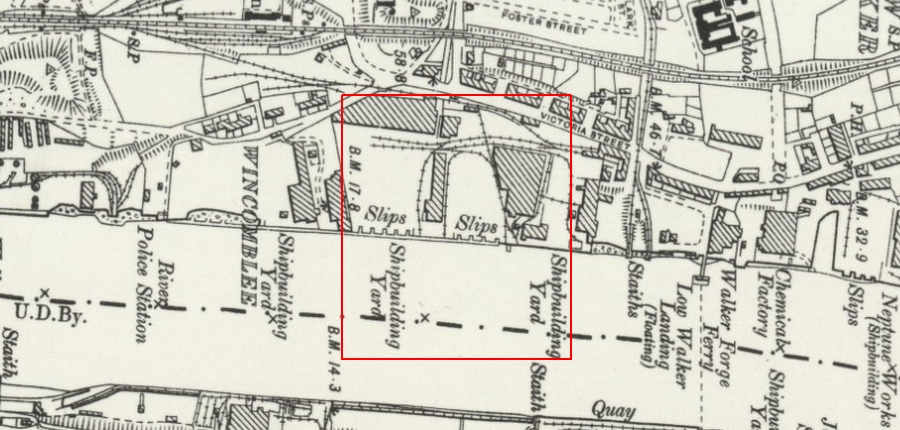
The Low Walker yard built over 90 vessels of various types, from dredgers to Nile steamers, Mitchell, and his business partner Henry Frederick Swan, even set up a shipbuilding yard at St Petersburg, in Russia, for the Tsar, Nicolas the First (Nicolay Pavlovich) and several warships were built there under Mitchell’s direction. Tsar Alexander II (Russia’s Tsar from 1855, when Nicolas 1 died) made Charles a Cavalier of the Order of St Stanislaus in recognition of his service, a rare honour for a British shipbuilder. Mitchell & Co also built many warship hulls for William Armstrong, Armstrong had established a company at Elswick in 1847 and had become one of the world’s leading armament manufacturers. Armstrong’s own yard was too far up river to build the hull sizes necessary for warship armaments of the day. This close working relationship resulted in a merger between the two companies in 1882, resulting in a new company called Armstrong, Mitchell & Co Ltd
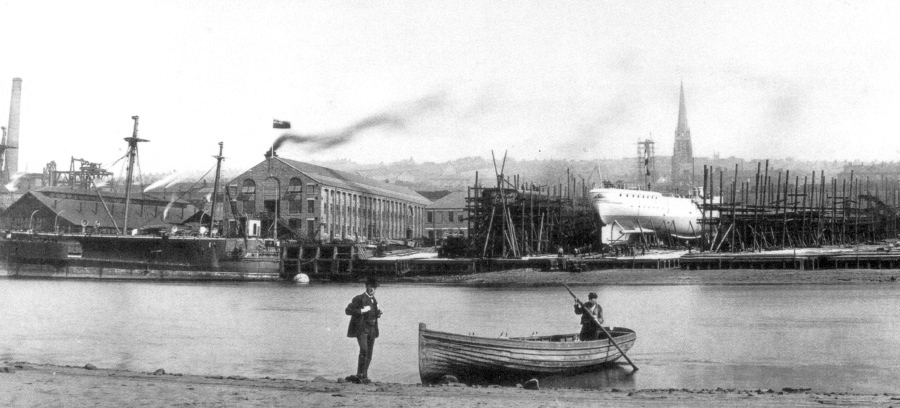
In January 1876 Dunraven set sail from Liverpool with a cargo of steel and timber bound for Bombay, India. The cargo was sold successfully and Dunraven took on a second cargo of spices, cotton and muslin, (a thin cotton cloth used in cheaper clothing and for wrapping cheeses, often known colloquially as “Cheesecloth”) for the return journey. The outbound journey was for a time uneventful until Dunraven reached the Red Sea approaches to the Suez Canal on 25 April. At that time, navigation was far more rudimentary than it is now, relying on Sextant bearings and compass headings, errors of navigation were frequent and on this occasion, thinking they were further up the Gulf of Suez than they actually were, Captain Care and the 25-man crew sailed the ship straight into a reef
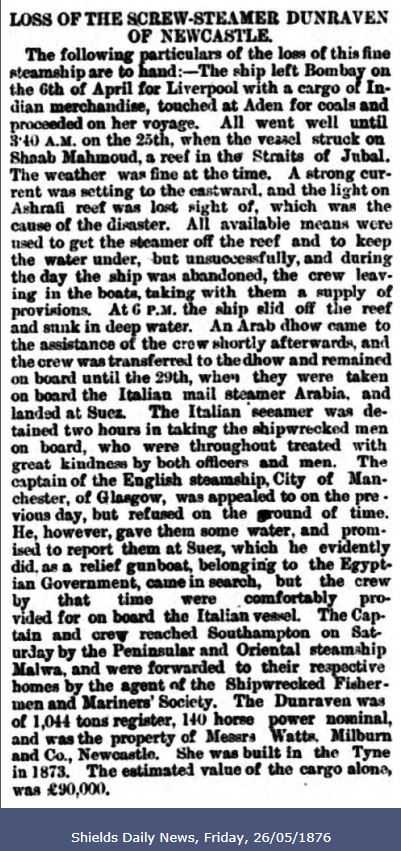
The Dunraven had gone into Sha’ab Mahmoud reef hard, and was stuck fast south of Beacon Rock, at the southern end of what is now the Ras Muhammad National Park. The “Shields Daily News”, a paper local to Newcastle on Tyne at that time, reported that “All available means were used to get the steamer off the reef and to keep the water under, but unsuccessfully, and during the day the ship was abandoned”. Indeed after some 14 hours she slid off Sha’ab Mahmoud, it is not reported if the cargo shifted or if other influences were involved but Dunraven capsized as she came away from the reef, and sunk in 25 metres of water. Dunraven’s crew, having worked hard to save her, must have been devastated, but the Red sea was an often travelled trade route and a passing Arab Dhow took the marooned sailors aboard (Shields Daily News 26/05/1876: “Loss of the screw-steamer Dunraven of Newcastle”), and, despite being declined passage on the British ship City of Manchester (the captain did, however, provide water and some provisions) the ship reported their stranding on arrival at Suez and an Italian ship, the mail steamer “Arabia” took them aboard and ensured they were well looked after until arrival at Suez and transfer for their return to England. On the return to England, at the subsequent enquiry into the loss of the Dunraven, the British Board of Trade found Captain Care to have been at fault
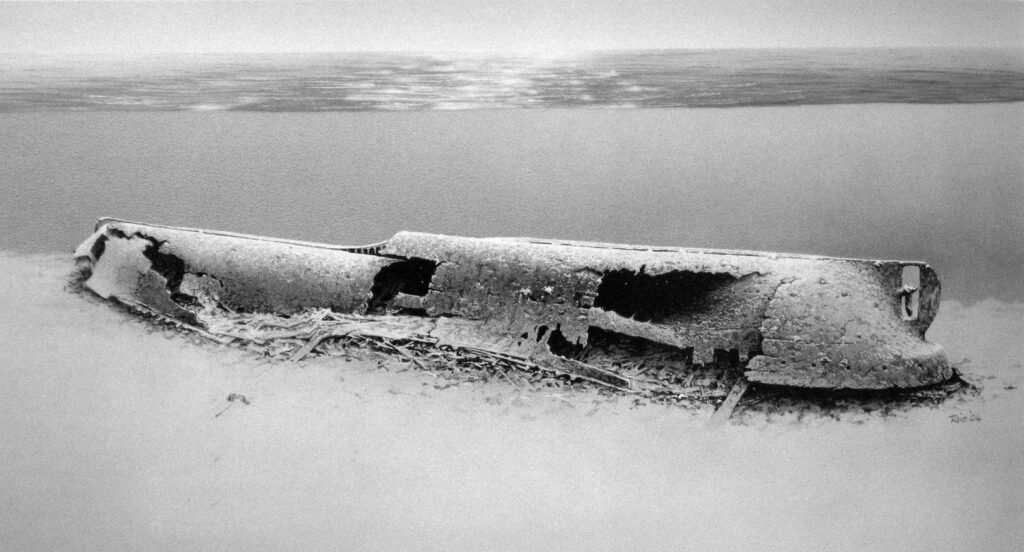
The vessel was discovered in the 1970’s, and was made the subject of a BBC TV documentary investigating the possibility the wreck was a lost ship, carrying gold to Lawrence of Arabia to fund the Arab armies fighting the Turkish occupation. It was very unlikely the Dunraven had a cargo of anything like Gold, a paragraph in the book “Under the Flag and Somali Coast Stories” the lifetime adventures of Langton Prendergast Walsh, C.I.E (29/02/1856 to 17/03/1927) is fairly clear the cargo was wool: (Walsh L.P: “Under the Flag and Somali Coast Stories, UNAUTHORISED ADVENTURES”, P143. Published by A. Melrose London) “On another occasion Charlie Moyle and I chartered a dhow to take us to Shab Mahmud, a coral reef near the Port of Tor in the Gulf of Suez. There the S.S. Dunraven was piled up, with her bow high and dry and her stern partly immersed in the sea. On getting alongside of her, it seemed that she might at any moment slip off and go down stern first into deep water. As the cargo was chiefly wool, it was of no use to us. Still, in order to pay expenses we took down the standard binnacle, collected several sextants, telescopes, binoculars, and a set of new sails, and realized by sale at Suez a little more than was adequate to pay expenses”
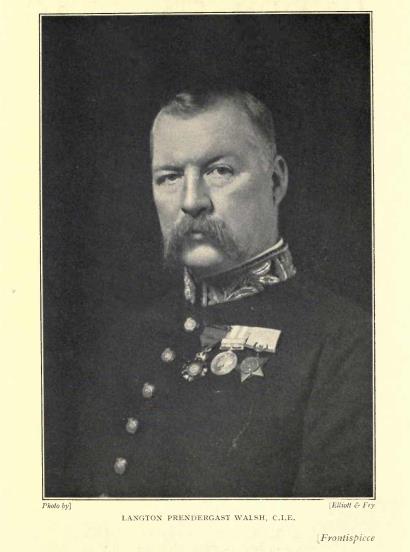
The description accompanying the auction of Langton Prendergast’s C.I.E medal at Sink’s auction house read:
“Langton Prendergast Walsh was born in February 1856 at Baroda, Gujarat, India, the son of Colonel T. Prendergast. Entering the Marine Postal Service in 1873, he transferred to the Bombay Political Service in 1879, before seeing active service in the Egypt and Sudan campaign whilst attached to the Indian Staff (Medal & clasp; Khedive’s Star). Soon after, Walsh found himself posted to Somaliland, in Consular charge of Berbera and Zeila, in which position he raised the Somali Coast Protectorate Police. Engaged in the operations of 1886, he was also on the Esa Expedition of 1890 and was present at Hussein Zareeba. Having been awarded the C.I.E. whilst Assistant Resident at Zeila, he was afterward Political Agent at Sawant Wadi. Retired in 1903, he soon put pen to paper and for many years contributed to the Indian and international press, publishing Under the Flag and Somali Coast Stories. A big-game hunter and member of the Conservative and Carlton Clubs, he died at home, Plas Idwal, Gunnersbury, W5, on 17 March 1927”
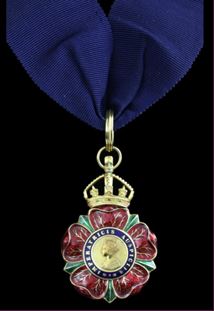
A further quote from Langdon Prendergast’s memorial has it that: “……In 1884 the British government signed a treaty with the Somali Sultans, allowing them to establish a protectorate known as British Somaliland. With his soldiers, Langton was sent to the newly established capital, Berbera, and became the first Administrator, a post he retained until 1893. British Somaliland often came under attack from the Sultan Nur and the Dervishes, who once looted all the camels and cattle of the British. Langton ordered his soldiers to kidnap the Sultan’s wife and infant child – holding them until the animals were returned” Walsh not only met General Gordon of Khartoum, (writing French language letters from Cairo on General Gordon’s behalf), but was probably the first on the wreck of the Dunraven following her abandonment by her crew and, likely, the rescuer of some of those crew noted as being “saved by the crew of an Arab Dhow” if the account in the book is genuine, of which I have no doubt whatsoever, bearing in mind Langton Prendergast’s other documented escapades, that it absolutely is accurate

The BBC did a documentary in 1979 which featured an interview with geologist Ayre Keller (whilst in a zodiac inflatable, similar to those I used in the Falkland Islands back in my Army days off New Island), Keller told BBC reporter, Jack Pizzey, that, while working for an oil company sounding pipeline routing, they echo located what seemed to be a wreck. Keller was friends with a local dive operation owner Howard Rosenstein, (Then owner of Red Sea Divers, Sharm el Sheikh) and mentioned the possibility of a wreck to him, there was clearly some contention over this, Howard Rosenstein seems (in some publications) to have claimed the find for himself, whatever the truth of the matter, both Keller and Rosenstein were involved in the discovery and identification of the SS Dunraven
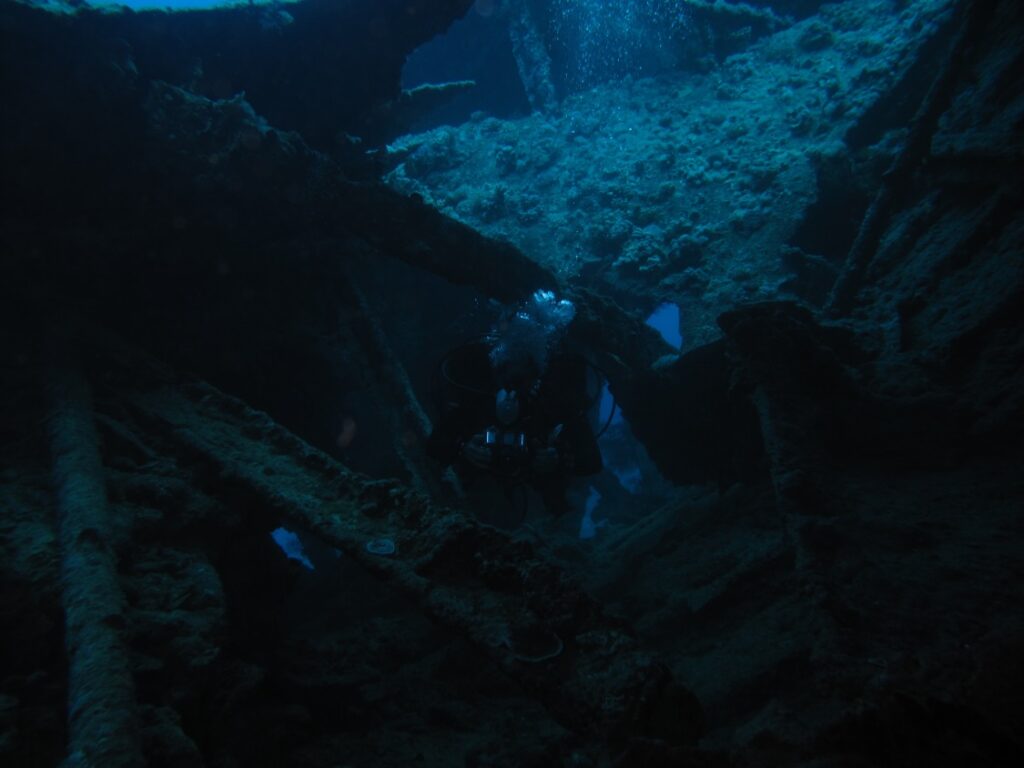
Howard Rosenstein’s divers found bottles marked with the name “Webb’s Double Soda and Other Waters”, that company traded from 1836 to 1880 proving any treasure tales surrounding Lawrence of Arabia could not be correct, Lawrence did not arrive in Arabia until 1916. Rosenstein also found plates with the initials G.F.B manufactured by George F. Barnes, exhibition in London in 1873. The wreck could therefore be dated between 1873 and 1880, those dates, coupled with finding the ships name in raised lettering, ‘SS DUNRAVEN’ on the transom, completed research in the Maritime Museum, Newcastle showing the wreck could only be the SS Dunraven built in 1873 by C. Mitchell and Company
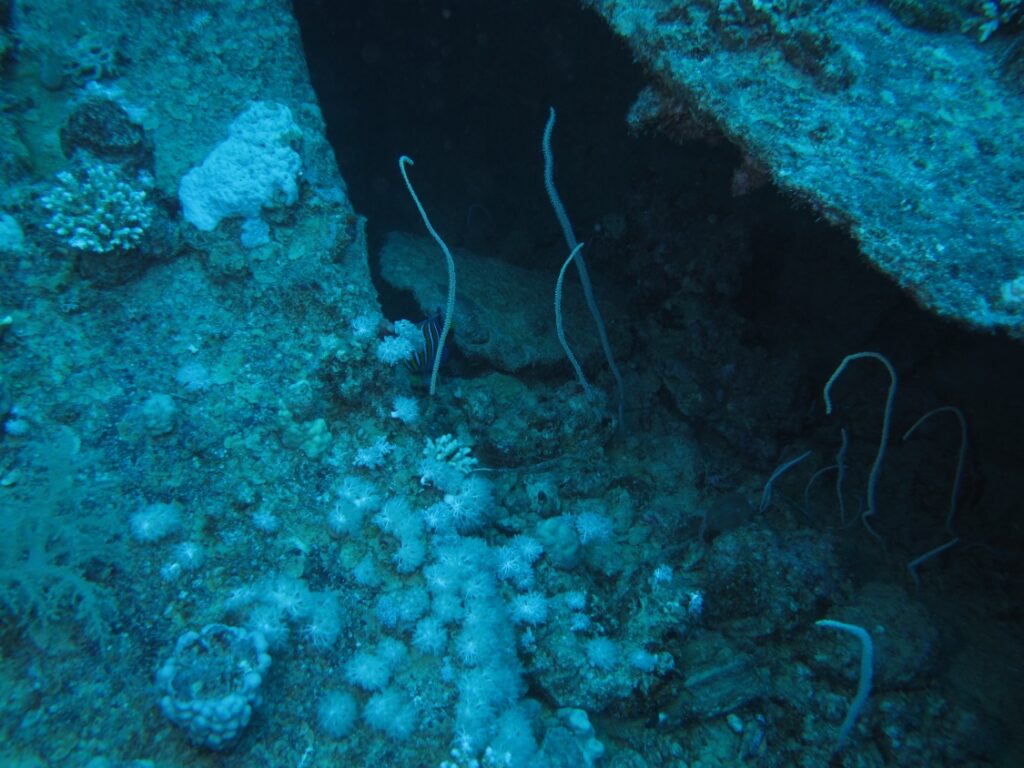
My first dive on the Dunraven was 04th August of 1997 part of my Red Sea excursion with Fenton Sub Aqua Club written up elsewhere in this blog, we were diving from the Princess Dalal and my little Red Book describes her thus: “04/08/97 Sha’b Mahmud “Beacon Rock” DUNRAVEN an English steam/sail ship that ran onto Beacon Rock in March 1876 and sank very quickly (portholes still open when found). She turned turtle & is largely empty her cargo having fallen & settled into the coral sand. We dropped to her stern & prop at 30m then entered her Starbord side (Left from stern) then made our way through twisted broken metal along her propeller shaft to her boilers encountering Lion Fish & large shoals of glassfish. Looked round the base of the boilers on the ceiling then went for’ard to the second section to impact area where it’s obvious why she foundered”
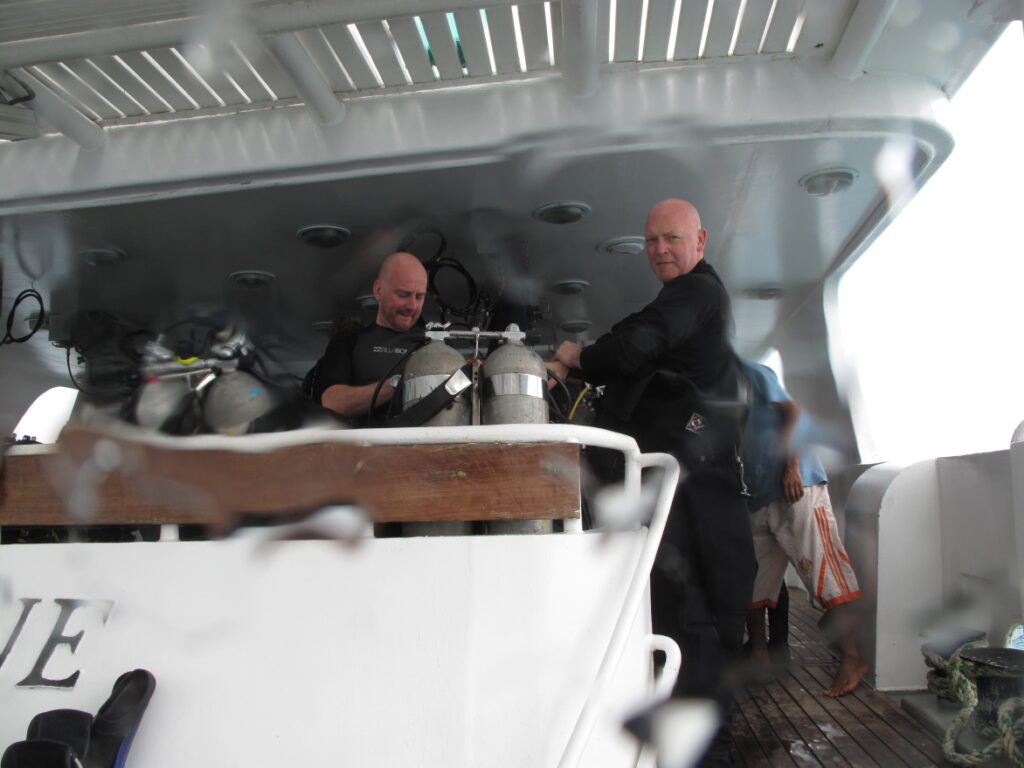
It would be 12 years until my next dive on the Dunraven, this time with a trip in 2010 on the live-aboard MY Hurricane, part of the Red Sea “Tornado” fleet, a step up from the Princess Dalal but a more “Western” boat if that is the right picture, something which loses a little in translation, where Princess Dalal had a distinct “fine wood and faded opulence” feel about her, Hurricane had a more “modern” and sanitised feel, both were perfectly good boats and I enjoyed both equally, they just represented a difference in diving in the area, less “camel trains into the desert”, more “welcome tourist divers”…… if you understand? Anyhow, my log recalls: “01/05/10 “DUNRAVEN” it’s 12 years since I last dived Dunraven and she now has a noticeable sag in her keel, there is more decay evident everywhere but she is still a fine dive – down to the stern & in on the Starbord side as she is upside down the prop-shaft is above you throughout. We wound up to the broken section passing the boiler overhead and then turned round to do the reverse course out the stern & along to the bow which is fairly trashed now but still can be discerned! After the bow we did a nice 15 min on the reef to finish off near the boat mooring. Plenty of life everywhere, very pretty. Viz 20m Buddy Craig Air In 200 Out 120”
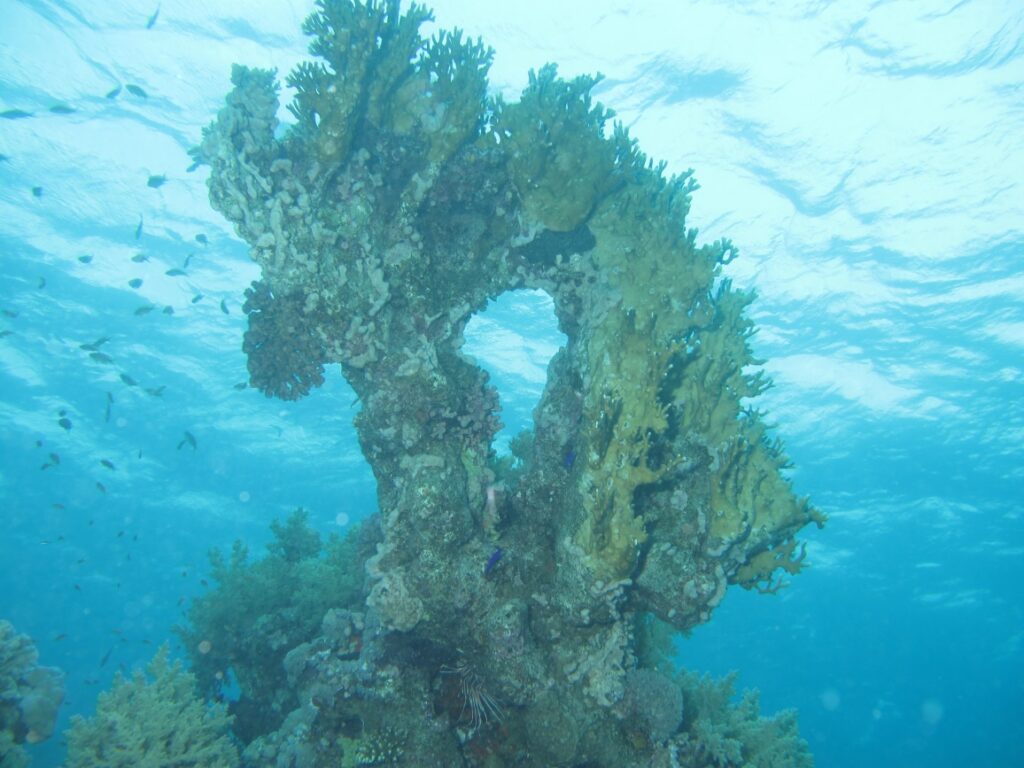
It would be another 3 years until my next, and, to date last dive on Dunraven, this time with Blue O2, another step forward in the live-aboard boats, slightly larger if I recall than Hurricane and done out in the same fashion, a Western modern style with space for everything and a good deal of technical support, Nitrox and charging points for lights and camera’s etc, on all the Liveaboards I have been privileged to dive from the food has been excellent, plenty of choice, enough to go round and then some, I have been lucky enough to have had wonderful boats and great catering over many years now, I count myself very fortunate in that! My navy log book records: “29/03/13 DUNRAVEN – Red – Sea Down to the stern of the inverted hull through into the hull itself at the taff rail – then a bimble up through the collapsed stern interior and along hull plates in and out of the ribs to the mid-section – clear exits all the way – in and out under superstructure & alongside the boiler up to exit at the bows and then re-enter & do the whole wreck again in reverse. Fantastic and very atmospheric! Out at the stern & onto the reef to deco @ drift Air In 200 Out 140 Buddy Craig”
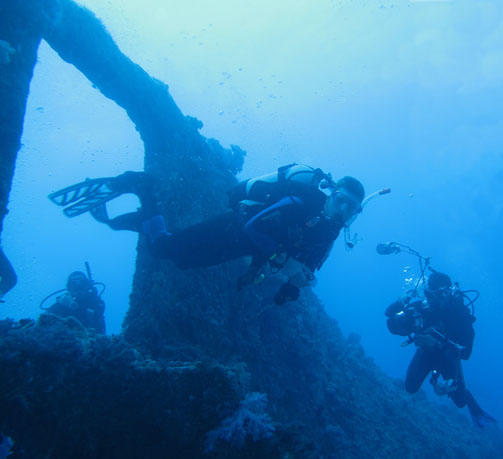
A British Board of Trade Inquiry, found the Dunraven’s Captain, Edward Richards Care, guilty of navigational negligence. Captain Care and the Dunraven’s second mate admitted they had difficulty identifying a light they thought was a lighthouse, whilst approaching the Gulf of Suez, on a return trip from India in what they described as calm conditions during the night. The light mysteriously went out, the second mate was left in charge and some time later, 24 April 1876, the ship grounded on Sha’ab Mahmoud. The Dunraven’s 25 crew were rescued by Egyptian boats and then transferred to vessels bound for the UK. The Board of Trade found Captain Care guilty of navigational error and Care was given a 12-month suspension of his Master’s rating but allowed to continue as a first officer
